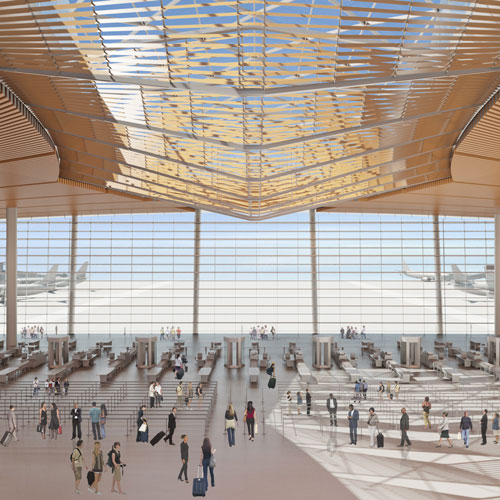
Before I was a lawyer, I was a CPA. I worked in Los Angeles for a small office-tower developer, and that introduced me to the business side of construction. My older brother, who was a lawyer, encouraged me to consider law school, seeing the opportunity for me to apply my business knowledge to law. But it wasn’t until my second year of law school, when I interviewed for an internship at my current firm, that I saw the connection. I loved the attorneys’ passion for an industry I already knew.
The industry is constantly changing. What we did 25 years ago, design-bid-build, is still done, but the industry is incredibly innovative. Most construction projects aren’t cookie-cutter, and the industry constantly looks to do things bigger, stronger, better, faster, cheaper, using public-private partnerships and integrated project-delivery methods. I love that.
The best way to explain construction law is that it involves understanding the legal relationships between parties to a project. It’s a unique area of our economy. There are multiple parties; owners, architects, engineers, general contractors, subcontractors, buyers. There are whole sets of different statuary schemes in every state. It has its own nomenclature.
Construction is a somewhat dangerous business. You have folks putting themselves at risk, and sometimes that’s underappreciated. Certainly, the industry is very serious about safety: I can see it in my clients and have been fortunate enough to be on projects where it’s safety first. But you can’t deny that contractors are in harm’s way.
Lawyers are generally risk-averse. Decision-makers in the industry aren’t. They want to grow and expand. So, one of biggest challenges is understanding the risk-reward relationship of a project early on so [that] you can advise your client as to whether they should take a project instead of just saying, ‘Don’t take on the project.’
Words drip with significance. When a general contractor decides to build a project, it has to sign an agreement. That agreement could be 30 pages long or 130 pages long, but either way, in signing it, the general contractor is obligating itself to certain provisions. The general contractor may think some of those provisions are boilerplate, but it’s important to understand those ‘binding’ obligations before you sign the agreement.
“The size of a firm doesn’t dictate the quality of the legal services.”
Richard Wittbrodt, Managing Partner
It’s great when a client comes to me early on in a project, just as a dispute arises. It allows me to understand the nature of the dispute contemporaneously versus a rear-view-mirror approach. You can connect with the project folks, investigate what’s going on, have meetings, try to resolve it as it’s happening. You avoid a protracted battle, which takes away the focus of the people building the project and decreases the costs of getting the dispute resolved. At its core, that’s the most wonderful aspect of the field.
I’m a LEED AP. Back in 2008, it seemed like green building was on the forefront, especially here in California. As lawyers, we thought if our clients were going into that area, we should as well. We didn’t think it would be a litigious area, and it isn’t, but we thought being able to talk the talk with our clients would give us a leg up on the competition. It’s worked out for the most part. I can address energy efficiency requirements in contracts, for example, including building requirements to hit energy specifications.
The size of a firm doesn’t dictate the quality of the legal services. We have 32 lawyers, and we’ve had clients who have been with the firm for more than 20 years. That allows you to establish real trust. They value your wisdom and guidance and experience, and [you] use that to make decisions on their behalf.
I have great respect for the construction industry. Here we have an industry that is one of the most important sectors of our national economy. I have great respect for an architect who can create a building, really from a blank canvas, then have another party, a general contractor, build from that canvas. The public projects support the economy, and the private projects run in. I think that’s terrific.


